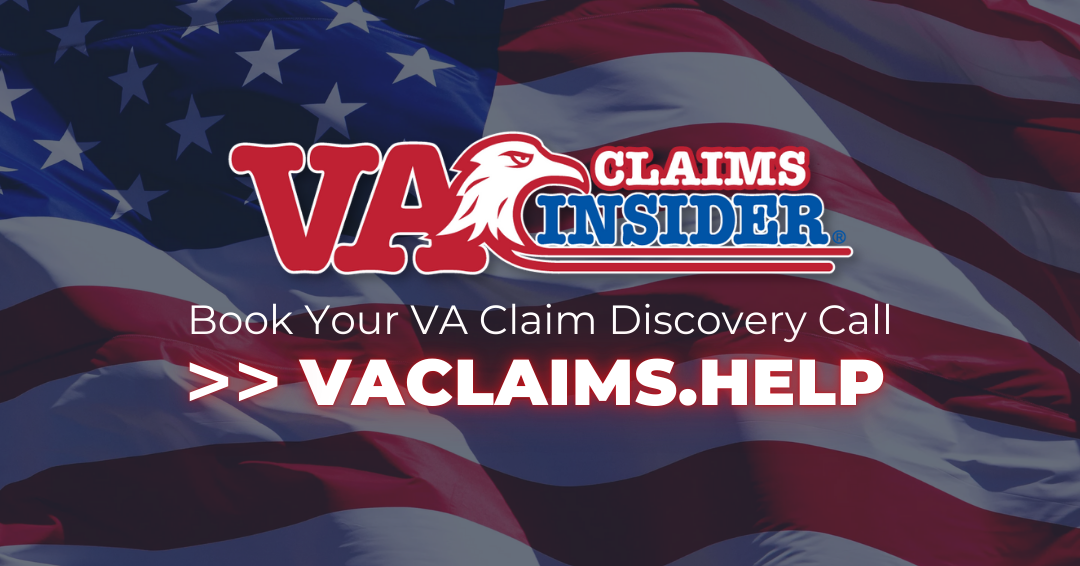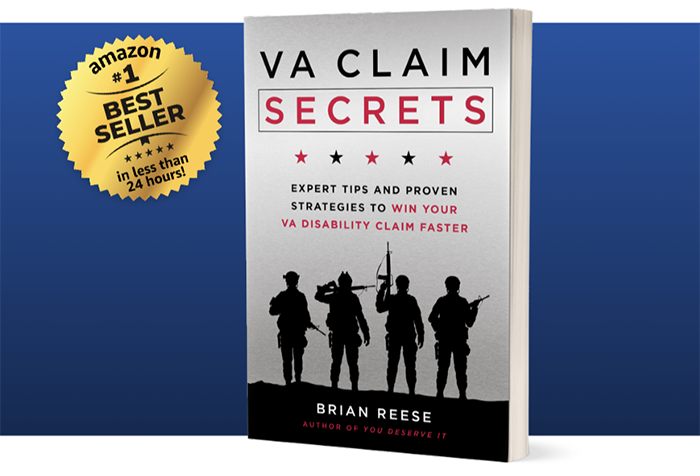Looking for Expert-Level VA Claim Answers?📱Call Us Now! 737-295-2226
Did you know that you can prove secondary service connection without a nexus letter?
Yep, it’s entirely possible!
Since 2016, VA Claims Insider has helped more than 25,000 disabled veterans navigate the VA disability claims process, and we’ve seen many secondary claims approved without a nexus letter.
However, not all secondary claims are created equal—some are much easier to win than others.
Success largely depends on three key factors:
- #1. A current diagnosis of the secondary condition
- #2. A well-established medical link between your primary service-connected disability (rated at 0% or higher) and the new secondary condition
- #3. Strong supporting evidence to back up your claim
At a minimum, we recommend that you secure a formal diagnosis of the new secondary condition that isn’t already service-connected.
This step alone should trigger the VA to schedule a Compensation & Pension (C&P) exam, where the examiner will assess your condition and provide a medical opinion regarding secondary service connection.
Okay, let’s explore more about the key elements of secondary service connection, how to win your secondary VA claim without a nexus letter, and the top 5 easiest secondary claims to get approved without a nexus letter.
Let’s go!
Table of Contents
Summary of Key Points
- Secondary Service Connection Without a Nexus Letter is Possible: Many veterans assume that a Nexus Letter is required to prove secondary service connection, but this is not always the case. Veterans can successfully establish secondary service connection if they have a current diagnosis, a well-established medical link between conditions, and strong supporting evidence, such as medical records and lay statements.
- Key Elements Needed to Prove Secondary Service Connection: To win a secondary claim without a Nexus Letter, veterans should consider the following: 1. A formal medical diagnosis of the secondary condition. 2. Evidence of an existing service-connected disability rated at 0% or higher. 3. Medical documentation showing how the primary condition caused or aggravated the secondary condition. 4. Lay statements from family, friends, or colleagues to support the claim. 5. A Compensation & Pension (C&P) exam, where the examiner provides a medical opinion on secondary service connection.
- Easiest Secondary Claims to Win Without a Nexus Letter: Certain secondary claims have strong, well-documented medical correlations, making them easier to prove without a Nexus Letter. Some of the top-rated secondary claims include: 1. Headaches secondary to mental health conditions (stress, anxiety, and depression). 2. Headaches secondary to tinnitus (due to chronic ringing in the ears). 3. Sleep apnea secondary to rhinitis (nasal congestion affecting airflow). 4. Radiculopathy secondary to back conditions (nerve pain caused by spinal issues). 5. Sinusitis secondary to rhinitis (chronic nasal inflammation leading to infections).
- Pro Tips and Strategies to Strengthen Your Claim: Veterans can increase their chances of winning their secondary VA claim by: Keeping detailed medical records that track the progression of the secondary condition. Ensuring consistent medical treatment to show continuity of care. Using PubMed® and BVA decisions as medical research evidence for claim support. Submitting a Disability Benefits Questionnaire (DBQ) from a private doctor to validate symptoms. If needed, obtaining a Nexus Letter to provide additional expert medical opinion on the connection between disabilities.
You Might Also Like the Following Articles
What is Secondary Service Connection?
According to 38 CFR § 3.310, a secondary condition is any disability that is proximately due to, caused, or aggravated by an already service-connected condition.
This means that if your existing VA-rated disability contributes to another condition that isn’t already service-connected, you may be eligible for additional compensation and benefits.
For instance, let’s say a veteran is service-connected for a back injury.
Over time, this back injury might cause the veteran to develop radiculopathy, which is pinching of a nerve root in the spinal column leading to sharp radiating pain.
In this example, radiculopathy could be claimed secondary to the veteran’s service-connected back injury.
The VA requires clear medical evidence that links the new secondary condition to the primary service-connected disability.
Pro Tip: If you’re filing for secondary service connection, a Nexus Letter is highly recommended. Why? Because secondary service connection requires “Medical Nexus Evidence” that your new disability is proximately due to or aggravated by a current service-connected disability.
How to Establish Secondary Service Connection Without a Nexus Letter
To establish secondary service connection without a nexus letter, the following elements are mission critical:
- Current Medical Diagnosis: Ensure you have a formal diagnosis of the new secondary condition from a qualified healthcare provider documented in a medical record. This is critical to have for the VA to order a C&P exam.
- Existing Service-Connected Disability Rated at 0% or More: Confirm that you have a primary disability already recognized and service-connected by the VA at 0% or higher.
- Medical Evidence Linking the Two Conditions: Compile medical records, treatment histories, and any relevant studies that demonstrate a connection between your primary and secondary conditions.
- Lay Evidence: Personal statements and observations from family members or colleagues can provide insight into how the secondary condition affects your daily life and its progression from the primary disability.
- C&P Exam: With a current diagnosis of a new secondary condition and some evidence linking it to a primary service-connected disability, the VA should order a C&P exam. During your exam, the C&P examiner will provide their medical opinion for secondary service connection.
Top 5 Easiest Secondary Claims to Get Approved Without a Nexus Letter
In our experience, here’s a list of 5 EASY secondary VA claims to get approved without a nexus letter:
#1. Headaches Secondary to Mental Health Conditions
Chronic stress, anxiety, and depression are known to contribute to tension headaches and migraines. If you’re service-connected with a mental health disorder and experience persistent headaches, your medical records may sufficiently establish this link.
#2. Headaches Secondary to Tinnitus
Tinnitus, characterized by ringing in the ears, can lead to significant discomfort and stress, potentially resulting in headaches. Veterans with service-connected tinnitus who develop headaches may find it straightforward to establish this secondary connection.
#3. Sleep Apnea Secondary to Rhinitis
Chronic nasal congestion from rhinitis can obstruct airflow during sleep, contributing to sleep apnea. If you have service-connected rhinitis and are diagnosed with sleep apnea, medical documentation of your symptoms may suffice for a secondary claim.
#4. Radiculopathy Secondary to Back Conditions
Spinal issues, such as degenerative disc disease or herniated discs, can impinge on nerves, causing radiculopathy—manifested as pain, numbness, or weakness in the limbs. A clear medical history linking your back condition to these neurological symptoms can support this secondary service connection.
#5. Sinusitis Secondary to Rhinitis
Chronic rhinitis can lead to sinus blockages and infections, resulting in sinusitis. If you’re service-connected for rhinitis and develop sinusitis, your medical records detailing this progression can establish the secondary connection.
Pro Tips and Strategies to Win Your Secondary VA Claim
Here’s a list of some pro tips and strategies to win your secondary VA disability claim:
- Comprehensive Medical Documentation: Maintain detailed medical records that chronicle the onset and development of your secondary condition in relation to your primary service-connected disability.
- Consistent Treatment Over Time: Regular consultations and treatments for both primary and secondary conditions strengthen your claim by demonstrating ongoing management and the interconnectedness of the ailments.
- Medical Research Studies: Supporting your claim with reputable medical research can help establish a recognized link between your primary service-connected condition and the new secondary condition. Use PubMed® to search and find medical research studies supporting a connection between two medical conditions.
- BVA Examples: Referencing previous BVA decisions where secondary service connection was granted under similar circumstances can be beneficial. Do some research online with your favorite search engine to find examples of positive BVA decisions granting service-connection for the same or similar secondary connection.
- Personal Statements: Provide detailed accounts of how the secondary condition impacts your daily activities and their perceived relationship to your primary disability.
- Supportive Lay Evidence: Statements from family members, friends, or colleagues can offer additional perspectives on the effects of your secondary condition and its link to your service-connected disability.
- Disability Benefits Questionnaire (DBQ): A VA DBQ is a standardized form used by the VA to collect medical information about your condition. Having a private healthcare provider complete a DBQ can provide detailed medical evidence to support your claim, especially evidence of a current diagnosis and severity of symptoms.
- Nexus Letter: A nexus letter for a secondary condition is a professional independent medical opinion that links your new secondary condition to your primary service-connected disability rated at 0% or more. While not always required, a well-crafted nexus letter can significantly strengthen your secondary claim by providing a clear, evidence-based explanation of how your new secondary condition is proximately due to, caused, or aggravated by your service-connected disability.
Common Pitfalls to Avoid
Many veterans unknowingly hurt their secondary VA disability claims by missing key evidence.
Here’s a list of some common pitfalls to avoid:
- No Medical Diagnosis: If you don’t have a current diagnosis of the new secondary condition in your medical records, the VA will likely deny your claim without ordering a C&P exam.
- Not Enough Medical Evidence: The VA relies on objective medical proof to establish a secondary connection—get consistent treatment and document symptoms over time.
- Dismissing the C&P Exam: If you downplay symptoms or don’t explain how the conditions are connected, you might receive an unfavorable VA medical opinion, leading to a claim denial.
Want Expert-Level Help With Your VA Claim? WE GOT YOUR SIX!
How does VA Claims Insider help veterans?
We make the confusing and frustrating VA claim process EASY through our 8-step proprietary system and one-on-one coaching; we’re the VA Claim EXPERTS you can trust, and YOU are never alone in this fight against the VA!
You’ll also receive VA disability expert Brian Reese’s SEM Method Blueprint—a proven formula that has helped over 25,000 veterans win their VA disability claims faster:
Strategy + Education + Medical Evidence = VA Rating and Compensation You Deserve FASTER!
Start today and unlock an exceptional level of service you deserve for serving our country:
➡️ You’ll hear from a VA Claim Expert over email within 15 minutes of signing up today.
➡️ You’ll hear from your Veteran Coach team within 24 hours of all inquiries during normal business days/hours.
➡️ Our terms are clear and simple: If we don’t win, you don’t pay. You have nothing to lose and everything to gain.
Click the red button below to start the process of winning your VA claim right now!
Fellow Veterans: Are You Ready to WIN, SERVICE-CONNECT, and INCREASE Your VA Disability Rating FASTER? We Can Help!

- VA Claims Insider is the #1 most trusted name in VA disability claims.
- Work directly with a VA claims coach who can help lead you to VA claim victory.
- 25,000+ disabled veterans served in our membership programs since 2016.
- 30% average rating increase for veterans who complete our #1 rated Elite program.
- 4.7/5.0 average rating out of 5,500+ total reviews; over 4,500 5-star reviews.
About the Author

Brian Reese
Brian Reese is a world-renowned VA disability benefits expert and the #1 bestselling author of VA Claim Secrets and You Deserve It. Motivated by his own frustration with the VA claim process, Brian founded VA Claims Insider to help disabled veterans secure their VA disability compensation faster, regardless of their past struggles with the VA. Since 2013, he has positively impacted the lives of over 10 million military, veterans, and their families.
A former active-duty Air Force officer, Brian has extensive experience leading diverse teams in challenging international environments, including a combat tour in Afghanistan in 2011 supporting Operation ENDURING FREEDOM.
Brian is a Distinguished Graduate of Management from the United States Air Force Academy and earned his MBA from Oklahoma State University’s Spears School of Business, where he was a National Honor Scholar, ranking in the top 1% of his class.




